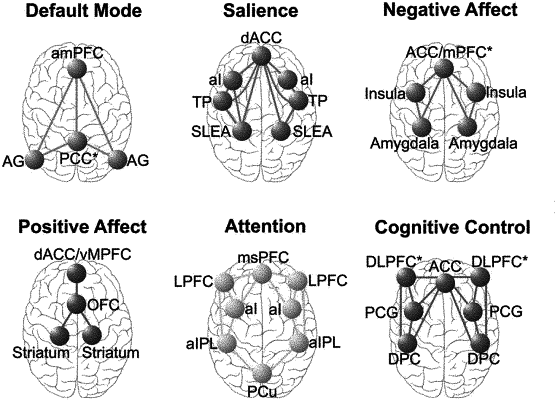| CPC A61B 6/501 (2013.01) [A61B 5/055 (2013.01); A61B 5/165 (2013.01); A61B 5/168 (2013.01); A61B 5/4064 (2013.01); A61B 5/4088 (2013.01); G06T 3/0093 (2013.01); G06T 7/0012 (2013.01); G06T 7/0014 (2013.01); G06T 7/0016 (2013.01); G06V 20/695 (2022.01); A61B 5/7267 (2013.01); A61B 2576/026 (2013.01); G06T 2207/10076 (2013.01); G06T 2207/10088 (2013.01); G06T 2207/10104 (2013.01); G06T 2207/20076 (2013.01); G06T 2207/20081 (2013.01); G06T 2207/30016 (2013.01); G06V 10/26 (2022.01); G06V 10/34 (2022.01)] | 20 Claims |

|
1. A method for recommending personalized treatment protocols for mental health conditions, comprising:
obtaining a functional scan of a patient's brain;
classifying the patient's brain with a biotype using a neurological model, where the classification is based upon whether each brain network of a plurality of brain networks is hyper active, typically active, or hypo active, and where the plurality of brain networks comprises: default mode, salience, negative affect, positive affect, attention, and cognitive control networks;
selecting a treatment protocol from a database based on the biotype, where the database comprises associations between treatment protocols and biotypes; and
recommending the selected treatment protocol for treatment of a mental health condition of the patient.
|